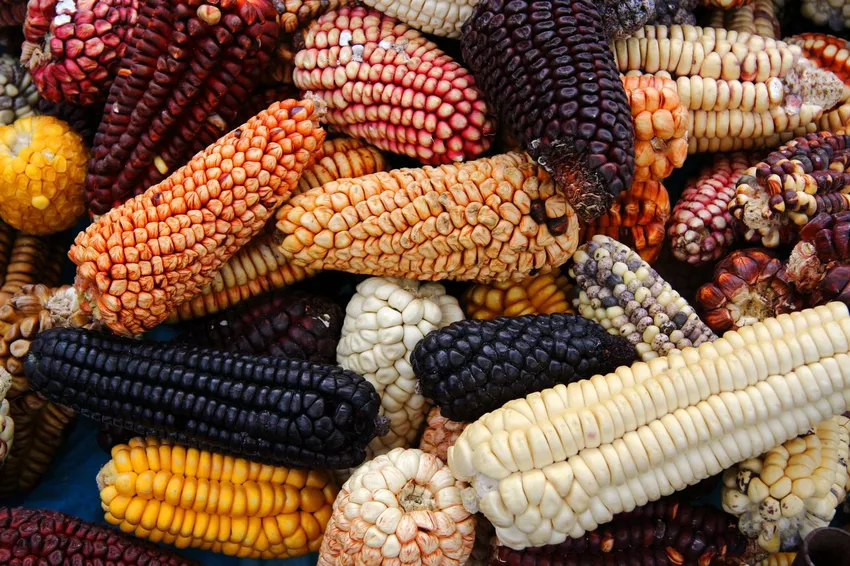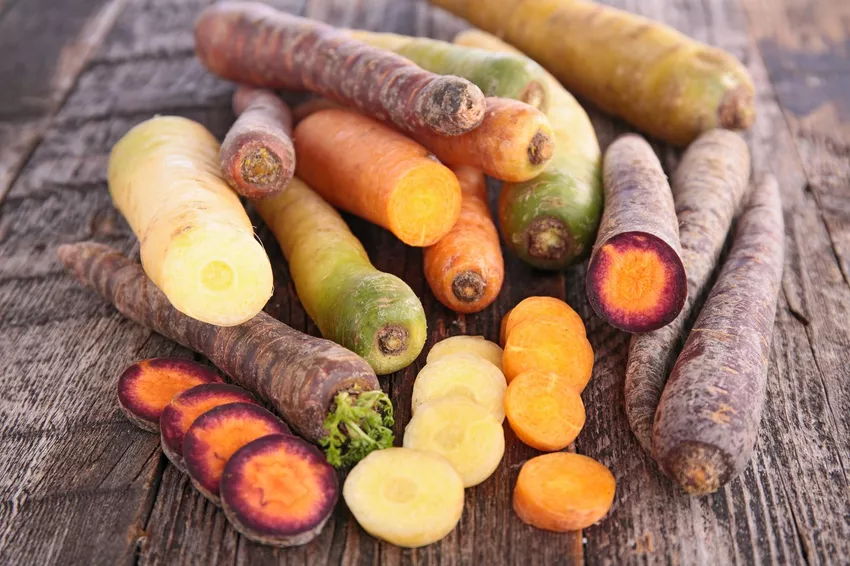What doesn't seem particularly edible at first glance has now made it onto our plates thanks to many changes.
Things change, nothing lasts forever - this applies to all living beings on our planet. Crops have also changed over the millennia. In addition to evolutionary biological changes, humans have also influenced the so-called archetypes of fruit and vegetable plants in order to make them more productive and tastier for us.
Most of the archetypes of many types of fruit and vegetables are so different from their current appearance that we could not match them to one another on the fruit and vegetable shelf. Thin, white roots with a pungent taste - not exactly the common description for a carrot, is it? But what we know today as the tasty beet bears little resemblance to the original carrot in terms of shape, color or taste. But not only the carrot has changed over time, cabbage, eggplant, corn, bananas, watermelons and apples have also experienced profound changes. We take you into the distant past and contrast the original types with their modern selves.
Banana

Equally popular with young and old today: the banana. While today's bananas are uniformly yellow in color, have tender flesh and are of an impressive size, the original form was small, green and extremely pithy. The seeds of the ancient banana can be compared to the seeds of the prickly pear (Opuntia). Sure: the way to today's banana enjoyment was long. Scientists assume that bananas were domesticated in Papua New Guinea as early as 7,000 years ago. However, anyone who thinks that the development of the banana has come to an end is wrong. International breeders have been working under high pressure for years to breed new varieties that are resistant to the widespread fungal disease "Yellow Sikatoga". Read more about it here: The Story of the Distressed Cavendish Banana
Aubergine

Originally, the aubergine comes from Asia. Before the popular vegetable was domesticated, the fruits were very small and greenish to purple. Have the efforts of diligent breedersWe have it to thank that the aubergine is not only virtually seedless today, but also about fifty times larger than it used to be. Unlike most other archetypes, archetypal aubergines are still cultivated in Asia. The locals particularly appreciate the supposedly excellent aroma.

corn

Wild corn has very little to do with today's corn. The wild form is much more reminiscent of grain and the grains were also quite hard and extremely dry. Breeders' first efforts probably began around 7000 BC. If you look at today's corn, we think the effort was definitely worth it.

Carrot

The sight of the original carrot will probably make you lose your appetite for raw food. The original form is little more than thin roots (white to purple on the inside) with a coarse taste. While the origin of the white primordial carrots is believed to be in the Mediterranean region, the origin of the yellow and purple varieties is believed to be in the Middle East. The first evidence of the carrot can be found in early Roman literature.

Watermelon

The Tsamma melon is the original form of the watermelon, which originated in Africa. The flesh of the Tsamma melon is predominantly whitish. Some natural forms already had a slight pink coloration, which was later specifically developed by human breeding since the 15th century. Meanwhile, watermelons are not only deep red, but also sugar-sweet and sometimes seedless. This would be unthinkable without the endless efforts of various breeders.
Apple

The search for the original apple leads to Central Asia, where the Asian wild apple (Malus sieversii) still thrives in a few areas today. Although the wild apple already resembles today's apples, while the tree is very high at up to 30m, the fruits are of a more manageable size. In terms of taste, only a few natural varieties of wild apples are halfway edible. Only centuries of crossbreeding brought tasty success.
Cabbage

The primeval cabbage is similar to today's rapeseed and has its origins in the Mediterranean region. Few types of vegetables and fruit are as versatile as wild cabbage. Targeted selection of the leaves led to today's white andRed cabbage, savoy cabbage and palm cabbage. Growing flowers gave us cauliflower and broccoli. The kohlrabi is a thickening of the trunk. You can find more interesting facts about cabbage breeding here: Urkohl: How we changed the genes.